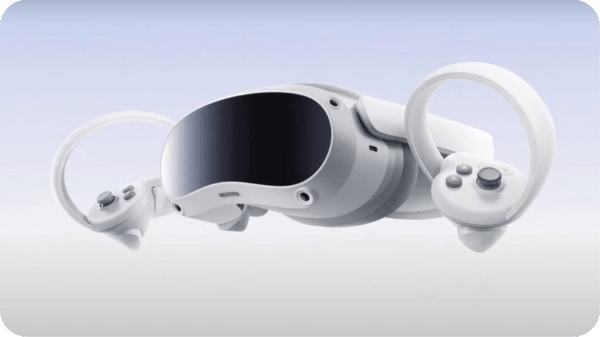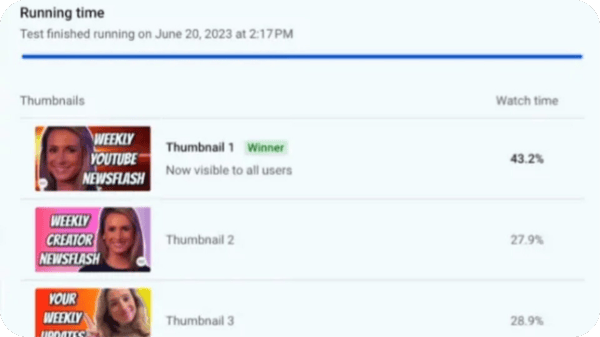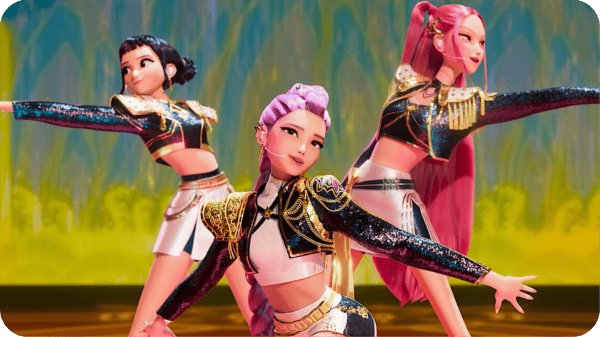- Tubefilter
- Posts
- TikTok's parent takes on VR
TikTok's parent takes on VR
Is this the future of marketing?

It’s Thursday and after 20 years, Twilight is still leaving its mark on everything from Roblox to Grok’s new Edward Cullen-inspired AI companion.
Today’s News
🥽 Bytedance breaks into VR tech
⚖️ YouTube expands A/B testing tools
🇰🇷 Netflix goes all in on Korean content
🔮 Is gen AI the future of advertising?
🗓️ 20 Years of YouTube: In 2016…
GAME ON
ByteDance is challenging Meta in the virtual reality of wearable tech
The plan: These days, VR wearable tech mostly falls into two categories: there are bigger, more powerful devices like Meta‘s Quest headsets—which typically sacrifice aesthetic qualities—and then there are sleeker designs like Meta’s Ray-Ban-branded Orion glasses.
Now, TikTok’s parent company is gearing up to give consumers a third option.
According to The Information, ByteDance has reportedly laid out a two-year roadmap for its eventual entry into the VR headset market. That effort is being led by the tech giant’s mixed reality hardware division, Pico, which is developing reality-shifting goggles that could arrive as soon as 2027.
Pico’s primary line of headsets has reportedly suffered from poor sales, leading to this pivot towards a sleeker, goggle-shaped design that will land somewhere between the two main types of wearables we’ve seen from rivals like Meta.
The product: Though the upcoming Pico device won’t be as heavy-duty as a Meta Quest headset, it will offer some strong performance updates compared to similar smart glasses. A paired “puck” will be able to fit in the user’s pocket, thus powering the goggles while still keeping them lightweight.
The effort to develop those goggles is separate from TikTok, but ByteDance could theoretically benefit by synergizing its wearables division and its popular social video app. After all, Quest headsets have served as a powerful gateway for Meta into the world of creator-developed experiences, which are currently flourishing thanks to sandbox platforms like Roblox. Does ByteDance hope to snag some of those Roblox dollars by using smart goggles to introduce TikTokers to the metaverse?
If so, the technological innovations developed by Pico—which will reportedly include specialized chips designed to reduce lag and other latency issues—could prove to be a crucial differentiating factor.
HEADLINES IN BRIEF 📰
YouTube is expanding the size of the experimental group for a “test and compare” feature that brings title and thumbnail A/B tests to YouTube Studio. (Tubefilter)
Threads is testing out a new option that allows some users to sign up with an existing Facebook account. (Engadget)
Some Chinese TikTok employees who have relocated or plan to relocate to the U.S. are reportedly asking the company to provide compensation for higher taxes. (Bloomberg)
YouTube TV appears to be offering discounts to some consumers in order to boost retention and re-engagement of NFL Sunday Ticket subscribers. (AInvest)
STREAMING BIG
As KPop Demon Hunters tops charts, Netflix is going all-in on Korean exports
The trend: International distribution of Korean properties ramped up during the COVID-19 pandemic, when shows like Squid Game and Physical 100 filled a void created by delayed production schedules. Now, Netflix’s decision to import more Korean content (including by bringing international editions of Physical 100 to the U.S. and Europe) shows that global demand for Korean IP is higher than ever.
Squid Game’s ongoing success is the main piece of evidence supporting the theory that Korean originals represent Netflix’s past, present, and future. According to data shared by Nielsen, the dystopian hit was the most-watched streaming original during the first half of 2025 and the ninth-most watched program of any type on streaming.
Then there’s KPop Demon Hunters. Since its June 20 premiere, the genre-bending anime film has climbed into Netflix’s top ten movie ranking and left a serious dent in the pop charts. Seven KPop Demon Hunters songs have now claimed spots on the Billboard Hot 100, while the film’s lead single, “Golden,” hit #1 on Spotify’s Daily Top Songs Global Chart just last week.
The impact: Bolstered by hits like KPop Demon Hunters, Netflix enjoyed a viewership boost in the latest edition of Nielsen’s The Gauge report. That bump indicates that, by buying into the Korean feeding frenzy, Netflix has a chance to make up some of the ground it’s lost to YouTube in recent years.
Google’s video hub has been a major exporter of Korean culture ever since Psy danced his way into global consciousness, and Korean channels like KIMPRO are still topping YouTube viewership charts.
Now, major YouTube success stories are starting to make the move to Netflix—and Korean cultural touchstones are shaping up to be some of the streamer’s biggest gets yet.
THE BIZ
40% of ads will be made with gen AI in 2026
The stats: Gen AI has grabbed hold of the digital economy—and according to the Interactive Advertising Bureau, it won’t be loosening its grip anytime soon.
The IAB’s 2025 Digital Video Ad Spend & Strategy Full Report found that 30% of digital video ads are currently made with or “enhanced by” gen AI tools (up from 22% last year). By 2026, we can expect nearly 40% of the ads we see online to have gen AI involvement.
86% of companies told the IAB they either already use gen AI or are planning to use gen AI to build their video ads. Their top two reasons for using it: to create different versions of the same ad to target different audiences, and to make “visual and style changes.”
The future: In the words of IAB CEO David Cohen, gen AI is “[transforming] the economics of advertising”—and “as the costs of production fall, the opportunities for advertisers multiply.”
Advertisers intend to exploit those opportunities outside of browser and mobile ads. Marketers told the IAB that they want in on connected TV, with 74% saying they have built or intend to build internal teams specifically to secure living room spots. A third also said they want platforms like YouTube and Twitch to offer inventive, digital-exclusive ways to weave brand content into interactive experiences during things like livestreams.
YouTube is especially eager to meet that demand. The platform is now the #1 most-watched connected TV destination in the U.S.—beating all streaming services and TV networks for watch time—and it has been increasingly rolling out more TV-specific ad formats to appeal to marketers.
The takeaways: with both major platforms and an increasing number of marketers adapting to gen AI, we’re not surprised that its reach is set to skyrocket in the months to come—and we expect that impact will be felt just as strongly by creators.
WATCH THIS
“Yee” helped bridge the gap between Vine and TikTok
The playlist: In 2016, Twitter shocked the creator community with its decision to shut down Vine. Luckily for viewers, quippy YouTube fare like Eddie Jolton’s "important videos” playlist was there to help fill in the gap. With its endless supply of quotable moments (“I didn’t dog the shot!“), eljolto’s playlist formed a bridge between Vine and TikTok.
During that interim period, videos like “yee” (which has now accrued over 100 million views) showed that YouTube content was becoming more efficient and hyperactive to meet the needs of the generation that had grown up on Vine. Nearly a decade later, is it any surprise that Shorts has become such a phenomenon?
The series: Want a deeper look at YouTube’s biggest milestones? In our 20 Years of YouTube series, we’re examining the uploads, trends, and influencers that have defined the world’s favorite video site—one year at a time. Click here for a full archive of the series.
Was this email forwarded to you? Subscribe here.
Want to introduce your brand to Tubefilter’s audience? Sponsor the newsletter.

Today's newsletter is from: Emily Burton, Drew Baldwin, Sam Gutelle, and Josh Cohen.




